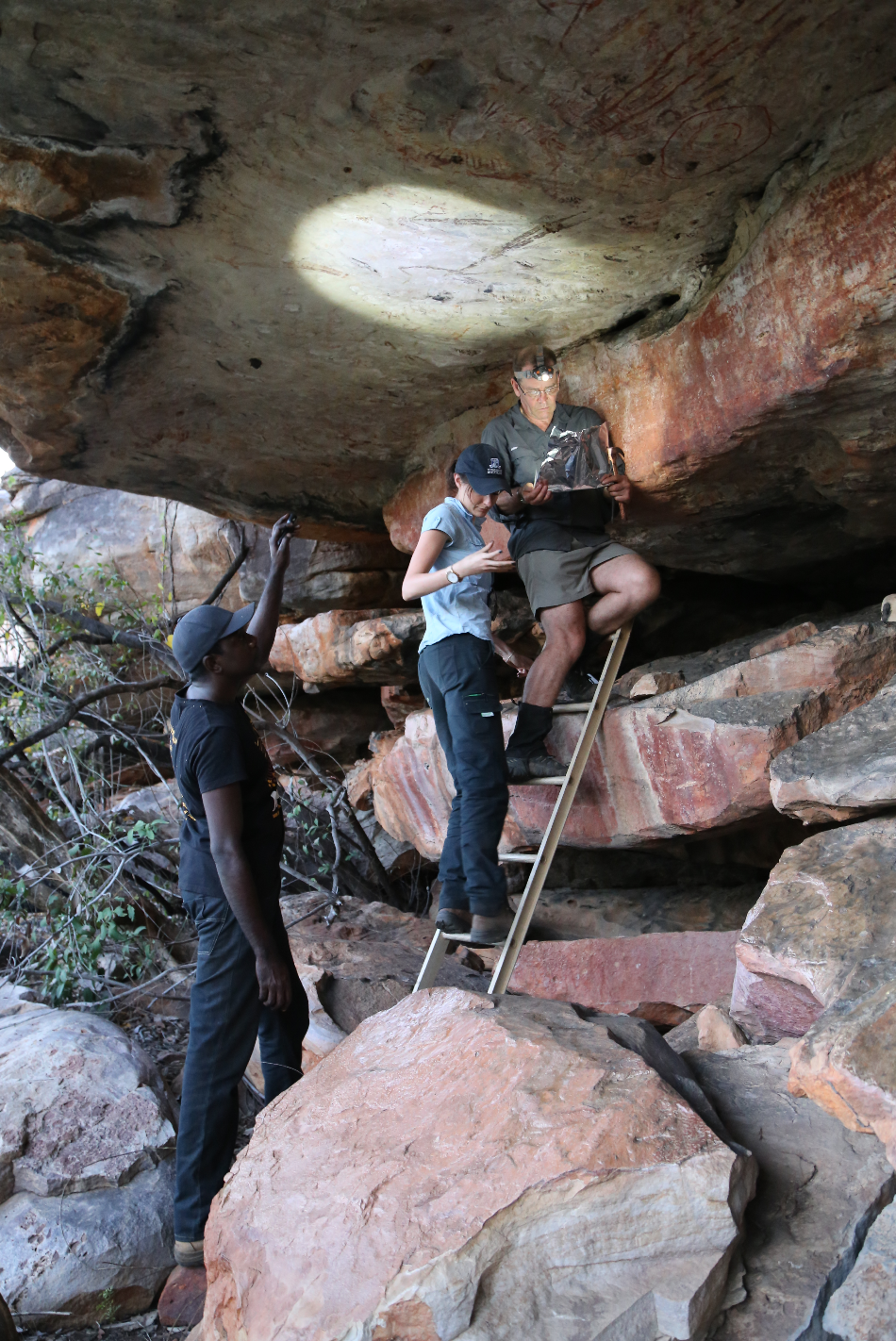Feb 6 2020
ANSTO and University of Melbourne researchers have developed a new way to provide age estimates for Aboriginal rock art.

With permission from local Traditional Owners in the Kimberley, mud wasp nests from 108 rock art sites were collected and then ANSTO’s radiocarbon dating capabilities determined the age of the wasp nest.
The project started back in 2014 with funding from the Australian Research Council and is the first-time scientists have been able to date a range of these ancient artworks, which people have been trying to establish for more than 20 years.
Mud wasp nests, which are commonly found in rock shelters in the remote Kimberley region, also occur across northern Australia and are known to survive for tens of thousands of years.
The nests contain tiny amounts of carbon, mostly in the form of charcoal from bushfires, which can be radiocarbon dated, as distinct from the adjoining rock art which contains no detectable carbon and cannot, therefore, be radiocarbon dated directly.
Using a new scientific approach, mud wasp nests overlying, and sometimes underneath, paintings were collected, dated and then used to establish minimum and maximum age limits for the rock art.
Scientists determined that paintings in the Gwion style - commonly characterised by elongated, highly decorated, human figures - proliferated in the Kimberley around 12,000 years ago.
This method of dating is being applied to other styles of Aboriginal Rock paintings and could prove useful in providing age estimates for other past human activity, including grinding hollows, grooves.
ANSTO’s CEO, Dr Adi Paterson, said this was a significant development in being able to date significant Aboriginal cultural heritage and expects it can be used to make further age estimates.
“This discovery was enabled through ANSTO’s ingenuity accelerator technology,” Dr Paterson said.
“There are so many applications for nuclear science, and this study is an excellent example of the many applications it has.”
University of Melbourne PhD candidate, Damien Finch, and ANSTO scientist, Dr Vladimir Levchenko were part of the team of researchers that developed this method of dating.
“This is the first time we have been able to confidently say that Gwion style paintings were created 12,000 years ago. No one has been able present the scientific evidence to say that before,” Mr Finch said.
“Mud wasps like to build their nests in protected areas, usually out of the weather, on the ceilings and walls of rock shelters, which happens to be the same place people chose to paint.”
“A painting beneath a wasp nest must be older than the nest, and a painting on top of a nest must younger than the nest.
“If you date enough of the nests you build up a pattern and can narrow down an age range for paintings in a particular style.”
“It is a great privilege to work with the Kwini elders and Traditional Owners on Balanggarra Country, to study this aspect of their ancient culture.
“We aim to show respect by placing the rock art in time, beside other evidence for the development, worldwide, of human culture at a time of rapid change in the environment after the Last Ice Age.”
A total of 101 radiocarbon dates have been reported from the testing regime, with 31 nests older than 10,000 years, 9 older than 15,000 years and two nests dated to just over 20,000 years.
The wide range of ages establishes that the wasp nests were built quasi continuously in the Kimberley over at least the last 20,000 years.
“The frequency in which nests were built make them capable of providing age constraints for archaeological features and rock art throughout that period, reaffirming this approach,” Dr Levchenko said.